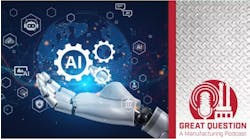- “Now that you have the data, what next?”
- “Are you proposing to replace my existing instrumentation, why do we need to do that?”
- “Our capital expenditure budgets have been slashed, can you supply us with a robust business case for any new technology deployment”?
Some of the core requirements of these industries from Industrial IoT systems will be discussed and further explored at the Smart Industry 2015 conference session entitled “Network & Protocol Alternatives for IIoT Connectivity”. These requirements can be summarized in what we call the “3 C’s requirement for Industrial IoT systems”.
- Context: Any piece of sensor data needs context, and without it there is limited meaning of an isolated data set. For example, a sensor measuring external weather when combined with a compressed air system performance data in a factory provides context to the overall system performance. This means combining computing infrastructure with data modelling and systems engineering experience is a must to provide context to any IIoT data set.
- Closing the loop: The Industrial OT (operational technology) world relies on closed loop systems from controlling processes to scheduling maintenance. A typical industrial systems map, for any medium to large industrial site, is a heterogeneous map comprised of systems from various suppliers that need to work in unison delivering specific process requirements or equipment performance. For any IIoT system to work within this infrastructure, there is a need for the system to be able to integrate with other OT systems and also enable closing a process or system loop. For example, if the IIoT system is delivering new process KPI’s through additional sensor data, it needs to also deliver a system view to close the loop for the process performance and provide control recommendations to optimise process performance.
- Criticality: Industries are run on 24x7, 365-day cycles requiring a range of critical systems to make the factory shop floor or mining, oil & gas operations work seamlessly. For these operations to allow a new system to be added to their existing infrastructure, it needs to deliver something new that is critical to the process. For example: This can be a new insight from the data providing dynamic recommendations to the control system or to the operator before the event occurs, or identifying waste in the process with a way to eliminate it. Without criticality of the information delivered by the IIoT system, it would face an uphill battle to be made a part of the Industrial systems map.
To learn more about these 3 C's and IIoT system requirements, consider attending “Network & Protocol Alternatives for IIoT Connectivity” at Smart Industry 2015 on October 7. In this session, Joy Weiss from Linear Technology and I will explore the real challenges of deploying wireless technologies in harsh industrial environments and how IEC 62591 and 6TiSCH wireless networking standards impact decision-making.
Sam Bose is the Founder & CEO of IntelliSense.io. He had been involved with the world of Machine-2-Machine for some 10 years when, as part of his roles at Deloitte Consulting and Motorola, he led the conception and deployment of the first generation of M2M services. Back then, he could see the potential of technology in changing the world but also that it had numerous obstacles, from always-on connectivity to delivering value from the collected data. In his entrepreneurial journey of starting and leading two software companies, IntelliSense.io was set up to deliver the promise of Internet of Things by focusing on IoT applications. The company concentrates on delivering a “ turnkey solution” for their customers by integrating sensing hardware, wireless sensor networks and prediction analytics applications delivered through an “Optimization as a Service” offering that targets high value processes in capital and asset intensive industries.



